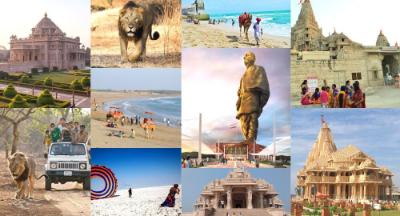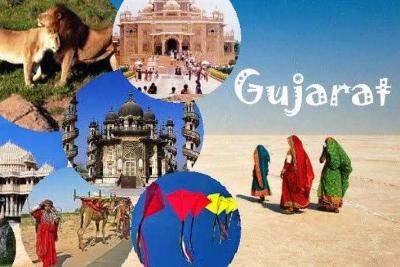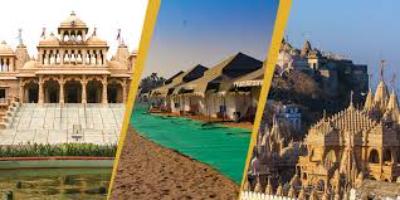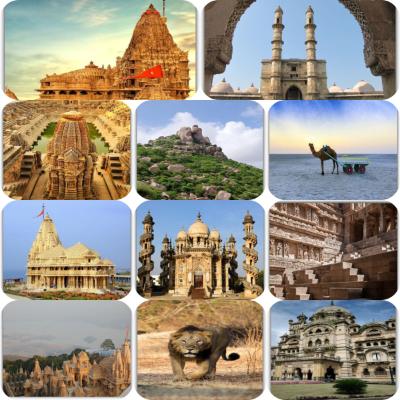Gujarat’s Ancient Trade Routes: Historical Insights for the Modern Traveler
Gujarat, a western state in India, is known for its vibrant culture, rich history, and architectural wonders. But did you know that Gujarat played a pivotal role in the ancient trade routes that connected India with the rest of the world? From the ancient Indus Valley Civilization to the thriving maritime trade during the medieval era, Gujarat has been a hub of commerce and cultural exchange for centuries. In this blog post, we will explore Gujarat’s ancient trade routes and uncover the historical insights they offer to the modern traveler.
1. The Indus Valley Civilization
One of the oldest civilizations in the world, the Indus Valley Civilization flourished around 2500 BCE in the region that is now Gujarat. The cities of Harappa and Lothal were major centers of trade and commerce during this time. Lothal, situated on the banks of the Sabarmati River, was a prominent port city and a hub for maritime trade in the ancient world. Excavations at Lothal have revealed a well-planned city layout, advanced dockyards, and evidence of trade with Mesopotamia, Egypt, and other civilizations.
2. The Mauryan Empire
Gujarat was a part of the Mauryan Empire, one of the largest empires in ancient India. During the reign of Emperor Ashoka, Gujarat witnessed the establishment of a strong administration and the promotion of trade and commerce. Ashoka built a network of roads connecting different parts of his empire, including Gujarat. These roads facilitated the movement of goods and traders, boosting economic activities in the region.
3. The Silk Road
The Silk Road, a network of trade routes that connected Asia with Europe, played a significant role in Gujarat’s history. Gujarat was an important stop on the maritime branch of the Silk Road, which connected India with the Persian Gulf, East Africa, and the Mediterranean. The ports of Bharuch and Surat became major trading hubs, attracting merchants from across the world. The trade of silk, spices, precious stones, and other goods brought immense wealth and cultural exchange to Gujarat.
4. The Spice Route
Gujarat was also a key player in the ancient Spice Route, which connected Asia with the Middle East and Europe. Spices such as pepper, cinnamon, cardamom, and cloves were highly prized commodities. The ports of Gujarat, particularly Surat, became major trading centers for spices. The Portuguese, Dutch, and British were among the European powers that established trading posts in Gujarat to monopolize the spice trade.
5. The Portuguese Influence
In the 16th century, the Portuguese arrived in Gujarat, establishing their presence along the coastline. They built numerous forts and trading posts, including the famous Diu Fort and the Daman Fort. The Portuguese not only influenced the architecture and cuisine of Gujarat but also introduced new crops such as potatoes, tomatoes, and chilies. The influence of the Portuguese can still be seen in the unique blend of Gujarati and Portuguese culture in places like Diu and Daman.
6. The Maritime Trade
Gujarat’s strategic location on the Arabian Sea made it a hub of maritime trade during the medieval era. The ports of Bharuch, Surat, and Khambhat witnessed a flourishing trade of textiles, spices, and precious stones. Ships from across the world, including Persia, Arabia, China, and Europe, docked at these ports, bringing in a steady stream of goods and cultural influences. The wealth generated from maritime trade led to the development of magnificent palaces, mosques, and temples in Gujarat.
Conclusion
Gujarat’s ancient trade routes offer a glimpse into the rich history and cultural diversity of the region. From the Indus Valley Civilization to the maritime trade of the medieval era, Gujarat has witnessed the ebb and flow of civilizations and the exchange of ideas and commodities. Exploring Gujarat’s trade routes allows the modern traveler to connect with the past, understand the global significance of the region, and witness the enduring legacy of trade and commerce. So, pack your bags and embark on a journey through Gujarat to unravel the historical insights of its ancient trade routes!
If you found this post informative and engaging, don't forget to share it with your friends and fellow travelers. Happy exploring!
Disclaimer : The information provided in this blog is for general informational purposes only. While we strive to keep the content accurate and updated, TravelSetu assumes no liability for errors or omissions. If you believe any part of this blog infringes your rights or causes concern, please notify us immediately at info[at]travelsetu[dot]com so that appropriate action can be taken.





